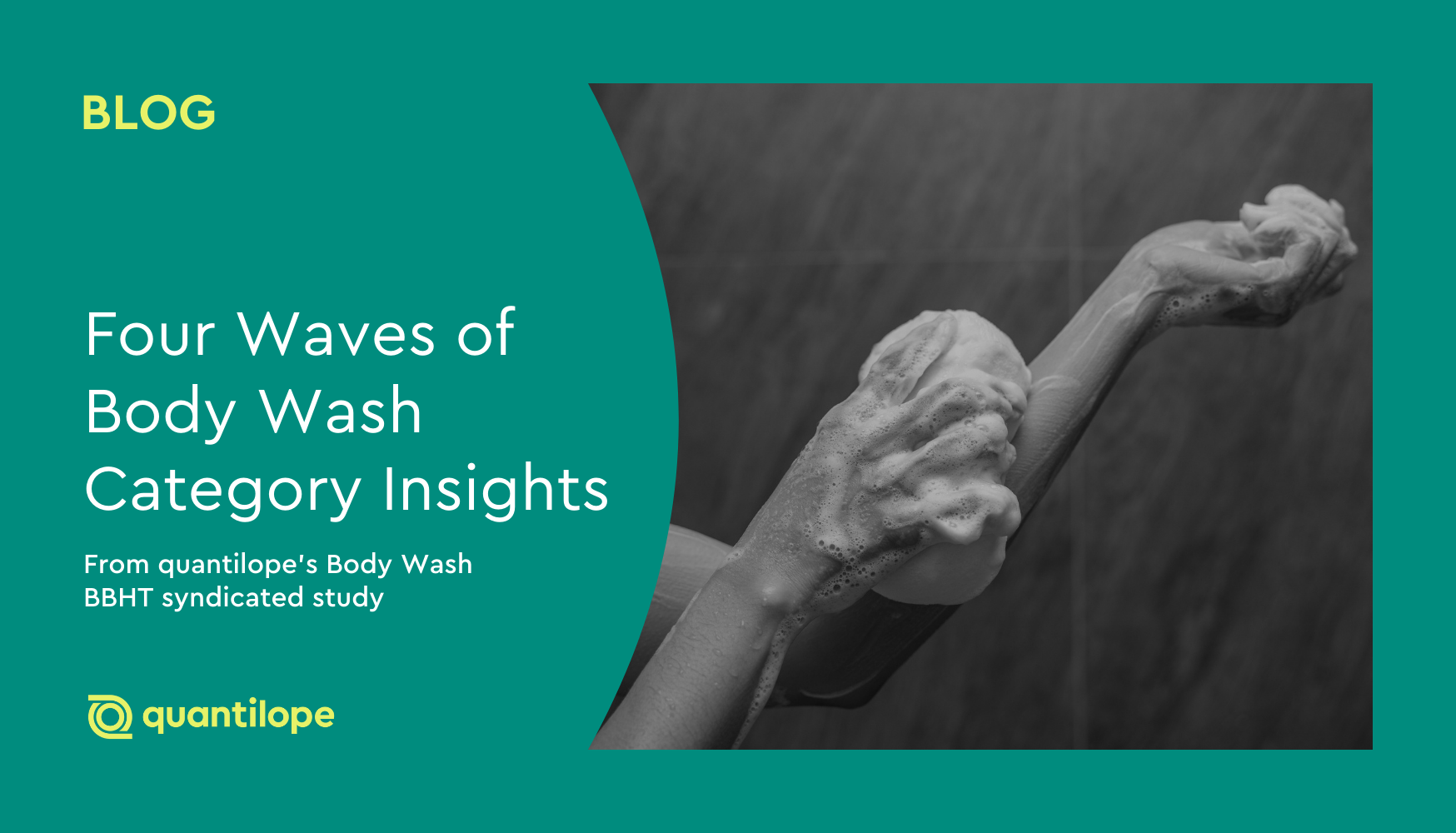In this blog post, learn what an agile transformation could look like for your research department, and how quantilope can help.
Table of Contents:
- What is an agile transformation in research?
- What you need to know before implementing an agile transformation in research
- How does this look in practice with quantilope?
What is an agile transformation in research?
In our rapidly evolving tech-focused world, things move more quickly and often more unexpectedly than they used to, especially when it comes to consumer behavior. The way consumers go about their everyday lives has changed tremendously over the last twenty years, as has the way companies run their business; a digital transformation has revolutionized the way businesses operate and communicate, but has also given way to needing everything quicker, cheaper, and higher quality (because agile, digital means make this possible).
Consumer research is undergoing an agile transformation, as a way to take into account the uncertainty and adaptability of consumer behavior over recent years. It allows for a way of research that responds to issues efficiently as they arise, resolving problems in an intelligent way, that's fast and prioritizes flexibility. It does away with traditional hierarchies that can form barriers to quick decision-making and empowers individuals across organizations to take more control in their respective roles without these barriers in place.
This kind of new operating model necessitates cultural change, enabling teams within an organization to be self-governing while at the same time guided by supportive leadership teams. The result is a workplace that is more adaptable and efficient in terms of structure, strategy, and output.
The agile approach to research includes clear goals and puts the structures and processes in place to achieve them. However, its agile nature means that change happens gradually - with research teams learning over time what works, what doesn't, and how to fine-tune approaches for maximum success. Below is everything to keep in mind before implementing an agile transformation to your research process.
What you need to know before implementing an agile transformation in research
As an automated consumer research company, quantilope's aim has always been to provide a platform that is versatile, available on-demand, quick and easy to use, and sure to deliver actionable insights. quantilope's values and agile methodologies fit perfectly with an agile way of working and have created new ways of approaching research for many clients.
quantilope is not only a player in the software space, but also an avenue for brands to transform their entire insights departments. Below are seven best practice recommendations that have emerged from helping clients transform their insights departments into agile teams.
1. Give reasoning for agile processes
As with any transformation, stakeholders need to understand why things are changing in their research efforts. There might be a number of reasons why you have decided to move towards an agile operating model, including the need to:
-
accelerate time-to-market to compete with start-ups or other agile organizations
-
produce higher quality data, supported by advanced methodologies to prevent major market failures
-
cope with smaller budgets while sustaining the quality of your initiatives
Understanding the 'why' helps to encourage stakeholder buy-in. If this stage is skipped and the transformation begins too quickly, agile transformation managers won’t get the commitment from their team that is required to succeed.
2. Think big – start small
If the direction and reasoning for your transformation is clear, it can be extremely tempting to start applying agile practices at full scale. Instead, we recommend following a Learn-Build-Scale Approach:
-
Learn by testing the agile insights process in smaller initiatives first (try in one specific market, for one product line, or for a small, ad-hoc project)
-
Early-on research may even be iterative in nature, leading to new ideas and studies along the way, as exemplified in quantilope's Agile Toolkit for Product Planning
-
Slowly build up these agile processes, using learnings from your initial (perhaps iterative) tests
-
Appoint agile leaders to then scale the initiative to the wider team
By following this approach, we have seen many clients successfully implement the Agile Insights concept across the breadth of their organization, using their tests as support.
3. Reduce learning anxiety
Fast learning is a key desired outcome of agile transformations. However, traditional research leaders are often hesitant to ditch their years of foundational career knowledge.
To combat this hesitation, create an open testing environment where example projects can be tested quickly and iteratively to promote a culture of learning rather than simply telling/validating. At the very start of your agile transition, present stakeholders with a roadmap for change, so they understand that agile transformations are by nature, evolutionary, and how they can go about testing these processes for themselves.
For example, quantilope's company showrooms allow team members to simultaneously log in, create test projects, create editable 'copies', and even to see a participant's view, so that every researcher (analyst or stakeholder) can get a first-hand feel for the agile process.
Agile transformations are a platform for continuous improvement through learning rather than trying to achieve perfection in one fell swoop.
4. Get support
You don’t have to do it alone! quantilope's certified research consultants offer support to clients by...
-
...providing an extensive onboarding period at the beginning of a client partnership. In this phase, clients are fully in control of the intensity and speed at which they begin to take over initiatives themselves.
-
...offering mid-term retrospectives to reflect on the transformation progress, detect blind spots, and work towards further optimization. These meetings provide a welcomed level of supervision as clients apply agile principles to their insights generation on their own.
5. Increase transparency
Share learnings and progress with everybody involved in research, as well as with the Marketing and Sales teams.
One of the biggest perks to agile research is the ability to get quick results, which means sharing findings sooner. It's important not only to share your wins, but your losses along the way, to create an even stronger foundation to your agile process. Agile means something is continually improving, and transparent learnings are a huge part of that.
Openly talk about problems that have arisen for the agile team in the research process. Discussing as a team highlights the fact that no process is ever perfect, but can be an opportunity to work through challenges together and be more courageous in sharing feedback.
6. Resist pushbacks
Even after an initial breakthrough, there is always a chance there will be a wave of resistance to new agile processes. It's easy to fall back into old ways of doing things because they are more familiar, while new processes require energy and new ways of thinking.
To combat any resistance, it is important for an agile leader to create a list of positive outcomes and talk about them within the organization. These might be showcase studies from earlier testing, demonstrative dashboards, or feedback sessions with peers.
Time and again we have seen that actually showcasing your agile platform and results to the wider team releases a renewed burst of energy amongst team members, accelerating the transformation and helping to make new processes a habit.
7. Don’t blame the people – improve the system
If you believe that your organization is not motivated to follow your new way of working, resist blaming individual members. It is not that people aren't willing to make a change, but that the agile mindset takes some time to develop. Think of the challenges as barriers that you need to remove. Common barriers to an agile research workspace are:
-
I don’t understand
-
I don’t know (how)
-
I am not allowed
Removing each barrier is all part of change management and as you do so you will start to notice how people's behavior changes.
How does this look in practice with quantilope?
quantilope's expertise lies in helping organizations achieve business goals by researching consumer views at each stage of the product or service pipeline. An agile approach to research is crucial. After all, the very reason businesses do research is because they need to answer questions around unknowns such as the consumer landscape, need gaps, and more. Once businesses come up with an idea, they'll need to research it, fine-tune it, and adapt if necessary before testing again - all of which requires adaptability and efficiency in the market research process.
At quantilope, agile research means it's not just fast, it's high-quality as well. quantilope makes automated advanced research methods accessible to researchers of all backgrounds to deliver results you can trust at the speed you need. You can read about how quantilope helped one business create a new product here. Just Spices, a spice manufacturer, made use of quantilope's research tools to understand what their target audience wanted from spices, how they would use them, and how a new product should be positioned in a competitive market.
quantilope's Agile Tooklit is another resource comprised of flexible tools and methods that can be combined with each other and used in an iterative way so that results from one part of the research feed into the next. In this way, consumer needs and desired product characteristics are identified so that the final product concept is optimized for market success.
To hear more about how quantilope has helped over 100 research departments transform into agile teams, listen to this webinar presented by quantilope Co-Founders Peter Aschmoneit and Thomas Fandrich.
Agile transformation represents a real cultural shift in organizations and it takes time to get right. To learn more about shifting to an agile way of working, get in touch below:



